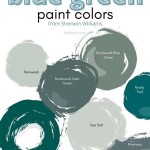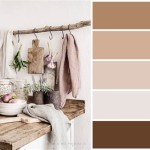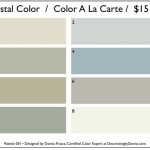Adding A Touch of Gold With Wall Paint Colors In Living Room Ideas
The inclusion of gold accents in interior design has long been associated with luxury, sophistication, and warmth. When incorporated thoughtfully, gold can elevate a space, adding a layer of visual interest and creating an inviting atmosphere. One effective way to introduce the allure of gold into a living room is through the thoughtful selection and application of wall paint colors. This article explores various approaches to using gold-infused wall paint to enhance living room aesthetics, examining complementary color palettes, application techniques, and design considerations.
The impact of color on mood and perception is well-documented. Gold, particularly, evokes feelings of prosperity, optimism, and comfort. However, due to its inherent boldness, using gold effectively in wall paint requires a nuanced understanding of color theory and interior design principles. A full-coverage application of a highly saturated gold paint can quickly become overwhelming, potentially detracting from the overall ambiance of the room. Instead, strategic use of muted gold tones, metallic finishes, or gold-accented paints can achieve a more refined and balanced aesthetic.
Selecting the Right Shade of Gold
The spectrum of gold hues is remarkably diverse, ranging from bright, almost brassy tones to subtle, champagne-like shimmers. The selection of the appropriate gold shade is paramount to achieving the desired effect. Consider the existing décor, lighting conditions, and the overall style of the living room. A minimalist living room might benefit from a soft, understated gold, while a more traditional or opulent space could accommodate a richer, more pronounced gold tone.
Undertones play a crucial role in the perceived warmth or coolness of a gold paint. Golds with warm undertones, such as those leaning towards bronze or copper, tend to create a cozy and inviting atmosphere, making them suitable for living rooms intended for relaxation and socializing. Conversely, golds with cooler undertones, perhaps incorporating hints of silver or platinum, can project a more modern and sophisticated feel, ideal for formal living spaces or areas designed for showcasing artwork.
Testing paint samples under varying lighting conditions is essential before committing to a specific gold shade. The way light interacts with metallic pigments can dramatically alter the perceived color, and what appears appealing under artificial light may look entirely different in natural daylight. Observe the samples at different times of the day to ensure the chosen gold complements the existing light sources and the overall ambiance of the room.
Consider the light reflectance value (LRV) of the gold paint. LRV measures the percentage of light a paint color reflects. A higher LRV indicates a lighter color that reflects more light, while a lower LRV signifies a darker color that absorbs more light. In smaller or dimly lit living rooms, a gold paint with a higher LRV can help to brighten the space and create a sense of openness. In larger rooms with ample natural light, a slightly darker gold can add depth and richness without making the room feel cramped.
Complementary Color Palettes for Gold Walls
The effectiveness of gold wall paint is significantly enhanced by the colors it is paired with. Certain color palettes naturally complement gold, creating harmonious and visually appealing combinations. Understanding these relationships is crucial for achieving a cohesive and balanced living room design.
Neutrals: Pairing gold with neutral colors such as white, beige, gray, or taupe creates a timeless and elegant look. The neutrality of these colors allows the gold to shine without overwhelming the space. Consider using different shades of gray to create depth and dimension. A warm gray with a hint of brown can complement a warm gold beautifully, while a cool gray can enhance the sophistication of a cooler gold.
Jewel Tones: Jewel tones, such as emerald green, sapphire blue, and ruby red, can create a luxurious and dramatic effect when paired with gold. These rich colors provide a striking contrast to the warmth and shimmer of the gold, adding a sense of opulence and grandeur to the living room. However, exercise caution when using jewel tones, as they can easily overpower the space if not balanced correctly. Use them as accents, such as in throw pillows, artwork, or rugs, to complement the gold walls.
Earthy Tones: Earthy tones, such as terracotta, olive green, and burnt orange, provide a warm and inviting backdrop for gold accents. These colors evoke a sense of nature and grounding, creating a cozy and comfortable atmosphere. Earthy tones can be used to soften the boldness of gold, making it feel more approachable and less ostentatious. Consider using natural materials, such as wood and stone, to further enhance the connection to nature and create a harmonious living space.
Black and White: A classic combination, black and white, can be used to create a striking contrast with gold. Black accents can add a touch of drama and sophistication, while white elements can brighten the space and prevent it from feeling too heavy. Consider using black and white patterns, such as stripes or geometric designs, to add visual interest and create a modern and stylish living room.
Application Techniques and Design Considerations
Beyond color selection, the application of gold paint and specific design choices can significantly impact the final result. Techniques like accent walls, stenciling, and the strategic use of metallic finishes can create unique and eye-catching effects.
Accent Walls: Rather than painting all four walls in a gold hue, consider creating an accent wall. This involves painting only one wall in gold, while the remaining walls are painted in a complementary neutral color. An accent wall can draw attention to a specific feature of the room, such as a fireplace or a window, and add a touch of drama without overwhelming the space. It's often best to choose the wall that is the focal point of the room or the wall that receives the most natural light.
Stenciling and Decorative Finishes: Stenciling allows for the creation of intricate patterns and designs on the walls, adding a layer of visual interest and texture. Gold paint can be used to stencil geometric patterns, floral motifs, or abstract designs onto a neutral background. Decorative finishes, such as faux finishes or textured paints, can also be used to add depth and character to the walls. Consider using a metallic glaze over a textured base coat to create a subtle shimmer effect.
Metallic Finishes: Metallic paints come in a variety of finishes, from high-gloss to matte. A high-gloss finish will reflect more light and create a more dramatic effect, while a matte finish will be more subtle and subdued. Consider the overall style of the living room and choose a finish that complements the existing décor. Metallic paints are best applied in thin, even coats to avoid streaks and ensure a smooth, uniform finish.
Furniture and Accessories: The furniture and accessories chosen for the living room should complement the gold walls. Consider incorporating gold accents in the furniture frames, lighting fixtures, or decorative objects. Metallic pillows, throws, and artwork can also be used to tie the room together and create a cohesive look. Avoid using too many competing metallic finishes, as this can create a cluttered and overwhelming effect. Stick to one or two main metallic finishes and use them sparingly throughout the room.
Lighting: Lighting plays a crucial role in enhancing the beauty of gold paint. Consider using a combination of natural and artificial lighting to create a warm and inviting atmosphere. Dimmable lights can allow for adjusting the brightness of the room to suit different moods and occasions. Position light fixtures strategically to highlight the gold accents on the walls and create interesting shadows and reflections. Warm-toned light bulbs can enhance the warmth of the gold, while cool-toned light bulbs can create a more modern and sophisticated feel.
Test and Refine: Always test the paint color and application technique in a small, inconspicuous area before committing to the entire room. This will allow for assessing the color under different lighting conditions and making any necessary adjustments. Take the time to refine the design and ensure that all elements work together harmoniously to create a beautiful and inviting living room.
Careful consideration of these factors – shade selection, complementary colors, application techniques, and lighting – will result in a living room that exudes understated elegance and warmth. The strategic use of gold in wall paint can transform a space, creating an inviting and sophisticated atmosphere that reflects personal style and design sensibility.
36 Gold Paint Ideas And Shades For A Regal Touch
36 Gold Paint Ideas And Shades For A Regal Touch
36 Gold Paint Ideas And Shades For A Regal Touch
36 Gold Paint Ideas And Shades For A Regal Touch
Creating A Gold Living Room Ideas Dulux
10 Ways To Add A Glimmer Of Gold Your Living Room Pittsburgh
36 Gold Paint Ideas And Shades For A Regal Touch
27 Colors That Go With Gold Color Palettes Meanings
36 Gold Paint Ideas And Shades For A Regal Touch
14 Modern Ways To Decorate With Gold Accents
Related Posts








